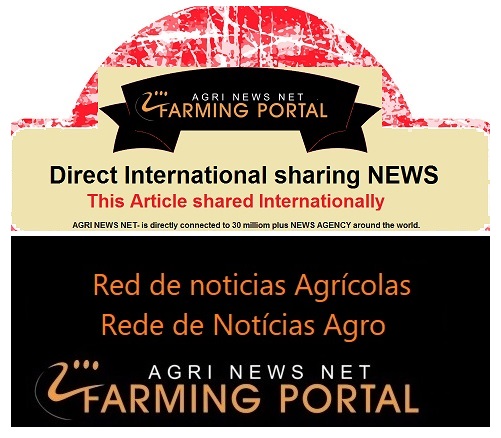World Farming Agriculture Commodity news - Weekly Updated - Exclusive and very popular - Delivering a Media service 365 days of the year
Conflict and insecurity, weather extremes, and economic shocks continue to drive acute food insecurity. According to the 2025 Global Report on Food Crises, acute hunger has grown in 2024 for the sixth consecutive year. Around 295 million people are now facing high levels of acute food insecurity, with the most people experiencing the most severe forms of acute food insecurity (IPC/CH5) and famine living in countries affected by conflicts.
A May 12, 2025, IPC snapshot reveals that Gaza’s entire population faces acute food insecurity, with 500,000 people (one in five) at risk of starvation, a sharp decline from October 2024 conditions. Globally, food price inflation remains high, affecting 87.5% of low-income countries (8.6% higher than April 22, 2025), 50% of lower-middle-income, 47% of upper-middle-income, and 18.5% of high-income countries, with food inflation outpacing overall inflation in 61% of 157 countries. Agricultural and export price indices rose by 2% and 5%, respectively, while cereal prices dropped 5%, with maize, wheat, and rice prices down 1%, 20%, and 30% year-on-year. The World Bank’s April 2025 Commodity Markets Outlook notes a sharp decline in global commodity prices, while the AMIS Market Monitor reports stable supplies for wheat, maize, rice, and soybeans.
A new World Bank, _
World Bank Initiatives on Food Insecurity:
The World Bank’s food and nutrition security portfolio spans 90 countries, targeting 327 million beneficiaries by 2030 through short-term social protection and long-term resilience programs like climate-smart agriculture. Key projects include:
Honduras: The Rural Competitiveness Project supports 6,287 small-scale producers (33% women, 15% youth, 11% indigenous) with market connections and new jobs, while the Corredor Seco Project aids 12,202 vulnerable families with nutrition-smart initiatives.
Eastern and Southern Africa: A $2.75 billion Food Systems Resilience Program enhances food crisis response and resilient agricultural production.
Malawi: A $95 million credit boosts agricultural commercialization.
Madagascar: A $200 million grant improves water supply, landscapes, and food systems in drought-prone areas.
Burundi: A $60 million project supports refugees and host communities with food security and micro-enterprise development.
Sahel Region: A $175 million irrigation initiative benefits 130,000 farmers across six countries.
Central African Republic: A $50 million project provides seeds and training to 329,000 farmers.
Guinea Bissau: A $15 million project supports 72,000 farmers with inputs and cash transfers.
Africa: The $60 million AICCRA project delivers climate-smart tools to 3 million farmers, boosting yields and income.
West Africa: A $766 million program enhances digital advisory services and food market integration.
Yemen, Tajikistan, Jordan, Bolivia, Chad, Ghana, Sierra Leone, Egypt, Tunisia: Various grants and loans ($50 million to $500 million) address food insecurity, resilience, and agricultural reforms.
The World Bank, FAO, IMF, WFP, and WTO’s joint efforts, including the Global Alliance for Food Security and the Global Food and Nutrition Security Dashboard, aim to address the hunger crisis through coordinated policy and financial responses, emphasizing trade facilitation, private sector engagement, and subsidy reform.

Grain markets closed higher for the week, with July corn up 16 cents, December corn up 15.25 cents, July soybeans up 10.25 cents, November soybeans up 15 cents, July soybean meal up $4.30 per short ton, July soybean oil up 42 points, July hard red winter wheat up 22.25 cents, July soft red winter wheat up 17.5 cents, and July Minneapolis wheat up 33.25 cents. Despite the rally, Jerry Gulke of the Gulke Group notes no clear fundamental driver, suggesting funds may be covering short positions after wheat and old crop corn hit new lows. Corn exports are 28% ahead of last year, and old crop stocks are tight at 1.415 billion bushels, yet prices remain volatile. Soybeans have resisted falling to predicted lows despite a record South American crop and trade tensions with China. Gulke attributes the market’s sideways movement to uncertainties in tariffs, trade policy, biofuels, and weather. He advises producers to hold off on marketing until clearer trends or events, like new trade deals with Japan or India, emerge. Weather could also drive prices, with recent rains aiding some areas but causing replanting issues in others, and forecasts predicting hot, dry conditions in the Western Corn Belt for July and August. Sustained buying or adverse weather is needed to maintain the rally, or prices may weaken.
Retail and wholesale beef prices in the U.S. are hitting record highs, driven by reduced beef production and a shrinking cow herd, the smallest since 1961, partly due to years of drought in Texas, which supplies over 14% of U.S. beef cattle. According to David Anderson, wholesale Choice ribeye steaks rose from $9.75 per pound in April 2024 to $14.18 in 2025, strip loins from $9.28 to $10.72, and lean ground beef from $6.73 to $7.48. Brisket prices, while high due to barbecue popularity, saw smaller increases. Tight supplies, despite heavier cattle weights, are pushing prices up, especially with grilling season approaching.
Chicken prices are also rising despite increased production, with wholesale boneless, skinless chicken breasts up from $1.75 to $2.75 per pound and legs from 72 to 88 cents per pound. In contrast, pork prices have dipped due to higher production, with wholesale pork loins dropping from $1.30 to 99 cents per pound and retail pork chops slightly down from $4.34 to $4.26.
Despite higher prices, meat demand remains strong, with no clear shift from beef to cheaper alternatives like chicken or pork. Consumers are paying elevated prices, supported by grocery store discounts, but Anderson notes that seasonal demand could further increase prices, and it remains to be seen if economic concerns will eventually shift consumer behavior.
Learn about drought impact
Chicago Mercantile Exchange (CME) live cattle turned higher on Thursday, as traders adjusted their positions ahead of the Memorial Day holiday weekend and wholesale prices continued to rise on consumer beef demand, Reuters reported, citing market analysts.
CME feeder cattle futures also firmed, with the most-active August contract touching a one-week high, as prices continued to firm in Midwest cash markets, traders said.
Meanwhile, the hog market ended the day mixed on technical trading, and continued softness in wholesale pork belly prices, with nearby contracts lower and deferred months turning higher.
The nearby CME lean hog June contract settled down 0.825 cent to 98.700 cents per pound, while the most active July contract closed down 0.475 cent to 102.050 cents per pound.
CME most-active August live cattle futures settled up 1.850 cents to 210.500 cents per pound. CME August feeder cattle futures ended 3.350 cents higher at 299.775 cents per pound.
Traders said they will be closely watching the sell-through rate at grocery meat counters over the long Memorial Day weekend, and how that might impact retailer buying for the Father's Day holiday, Norcini said.
Expectations that the US Department of Agriculture's (USDA) Friday cattle on feed report will show tight cattle stocks have also kept support under prices, analysts said.
US May 1 cattle on feed are estimated to be down 3.2% from a year ago, a Reuters poll of analysts showed.
"The supply side is pretty much known at this point, unless there's some really drastic surprise in the report," said Dan Norcini, an independent livestock analyst.
Boxed beef prices continued to rise. Choice cuts of boxed beef rose $1.38 to $360.97 per cwt, while select cuts rose 67 cents to $348.95 per cwt, USDA data on Thursday afternoon showed.
Livestock traders also said they were tracking news that Brazil began a 28-day bird flu observation period, which it hopes will show the country's chicken farms are free of the disease, was seen as somewhat negative for livestock futures, traders said.

DISCLAIMER
The views and opinions expressed in this program are those of the writers and do not necessarily reflect the views or positions of any entities they represent. The information contained in this website is for general information purposes only. The information is provided by CRA and while we endeavour to keep the information up to date and correct, we make no representations or warranties of any kind, express or implied, about the completeness, accuracy, reliability, suitability or availability with respect to the website or the information, products, services, or related graphics contained on the website for any purpose. Any reliance you place on such information is therefore strictly at your own risk.






















